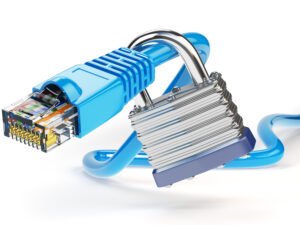6: Sound the Alarm -Detection and Response
- Description
- Curriculum
- Reviews
- Grade

Sound the Alarm: Detection and Response
In this course, you will learn how to detect, investigate, and respond to cybersecurity incidents. You’ll explore the steps needed to contain, eradicate, and recover from attacks, analyze network communications, and use industry-standard tools to monitor and investigate events.
Throughout this course, you will:
-
Identify the steps to contain, eradicate, and recover from a security incident
-
Analyze packets to interpret network communications and detect anomalies
-
Understand the basic syntax, components of signatures, and logs in IDS and NIDS tools
-
Perform queries in Security Information and Event Management (SIEM) tools to investigate events
-
Complete 7 hands-on labs to practice detection, analysis, and response in realistic scenarios
By the end of this course, you’ll have practical experience using detection and response tools to identify threats, investigate incidents, and take action to protect organizational systems.
-
1Introduction to the Course
-
2Course Overview
-
3Helpful Resources and Tips
-
4George - Grow You Cybersecurity Career with Mentors
-
5Welcome to Module 1
-
6Introduction to the Incident Response Lifecycle
-
7Quiz - Matching Apply the NIST Lifecyle to a Vishing ScenarioQuiz - Matching Apply the NIST Lifecyle to a Vishing Scenario
-
8Assignment - Document an Incident with an Incident Handler's Journal
-
9Quiz - Assignment QuestionsQuiz - Assignment Questions
-
10Assignment - Example
-
11Quiz - The Incident Response LifecycleQuiz - The Incident Response Lifecycle
-
12Incident Response Team
-
13Aisha - The Importance of Communication During Incident Response
-
14Roles in Response
-
15Incident Response Plans
-
16Quiz - Incident Response OperationsQuiz - Incident Response Operations
-
17Incident Response Tools
-
18The Value of Documentation
-
19Intrusion Detection Systems
-
20Overview of Detection Tools
-
21Quiz - Detection and Documentation ToolsQuiz - Detection and Documentation Tools
-
22Alert and Event Management with SIEM and SOAR Tools
-
23Overview of SIEM Technology
-
24Quiz - Management ToolsQuiz - Management Tools
-
25Module 1 - Wrap-Up
-
26Module 1 Glossary Terms
-
27Module 1 - Final QuizModule 1 - Final Quiz Description: This quiz is designed to test your understanding of key concepts in incident response and security operations. You’ll be asked about the difference between security events and incidents, the steps of the NIST Incident Response Lifecycle, the roles of specialized teams, and the tools used to detect, analyze, and respond to potential threats. Questions also cover important processes like documentation, SIEM data collection, and the functions of IDS, IPS, and SOAR. By completing this quiz, you’ll reinforce your knowledge of how cybersecurity professionals prepare for, investigate, and manage incidents effectively.
-
28Welcome to Module 2
-
29Avery - Apply Soft Skills in Cybersecurity
-
30The Importance of Network Traffic Flows
-
31Maintain Awareness with Network Monitoring
-
32Data Exfiltration Attacks
-
33Quiz - Understand Network TrafficQuiz - Understand Network Traffic
-
34Packets and Packet Captures
-
35Learn More About Packet Captures
-
36Interpret Network Communications with Packets
-
37Reexamine the Fields of a Packet Header
-
38Investigate Packet Details
-
39LAB - Getting started with Wireshark , Analyze Your First Packet
-
40Quiz - Capture and View Network TrafficQuiz - Capture and View Network Traffic
-
41Packet Captures with tcpdump
-
42Overview of tcpdump
-
43LAB - How to Install KaLi Linux using VirtualBox VM
-
44LAB - Capture your First Packet Download KALi Linux
-
45Quiz - Packet InspectionQuiz - Packet Inspection
-
46Assignment - Research Network Protocol Analyzers
-
47Assignment - Example
-
48Module 2 - Wrap-Up
-
49Module 2 Glossary Terms
-
50Module 2 Final QuizModule 2 Final Quiz Description: This quiz assesses your understanding of network traffic monitoring, packet analysis, and the use of network protocol analyzers such as Wireshark and tcpdump. You will demonstrate knowledge of packet structures, IP header fields, and key tcpdump commands and options. The questions cover identifying suspicious network activity, understanding packet capture files, filtering traffic, and interpreting protocol information. By completing this quiz, you’ll reinforce your ability to analyze network communications and apply foundational cybersecurity skills in monitoring and investigating network traffic.
-
51Welcome to Module 3
-
52The Detection and Analysis Phase of the Lifecycle
-
53Cybersecurity Incident Detection Methods
-
54Ongoing Monitoring of CI/CD
-
55Alex - Changes in the Cybersecurity Industry
-
56Indicators of Compromise
-
57Quiz - Indicators of CompromiseQuiz - Indicators of Compromise
-
58Analyze Indicators
-
59Assignment - Investigate a Suspicious File Hash, Using VirusTotal
-
60Assignment - Example
-
61Quiz - Incident Detection and VerificationQuiz - Incident Detection and Verification
-
62The Benefits of Documentation
-
63Document Evidence with Chain of Custody Forms
-
64Best Practices for Effective Documentation
-
65The Value of Cybersecurity Playbooks
-
66Assignment - Use a Playbook to Respond to a Phishing Incident
-
67Assignment - Example
-
68The Role of Triage in Incident Response
-
69Morgan - Foster Cross-Team Collaboration
-
70The Triage Process
-
71The Containment, Eradication, and Recovery Phase of the Lifecycle
-
72Business Continuity Considerations
-
73Quiz - Response and RecoveryQuiz - Response and Recovery
-
74The Post-Incident Activity Phase of the Lifecycle
-
75Post-Incident Review
-
76Assignment - Review a Final Report
-
77Quiz - Assignment QuizQuiz - Assignment Quiz
-
78Quiz - Matching - Explore an Incident Event TimelineQuiz - Matching - Explore an Incident Event Timeline
-
79Quiz - Post Incident ActionsQuiz - Post Incident Actions
-
80Module 3 Wrap-up
-
81Module 3 Glossary
-
82Module 3 Final QuizModule 3 Final Quiz Description: This quiz assesses your understanding of key concepts from the NIST Incident Response Lifecycle, including detection, containment, eradication, recovery, and post-incident activities. You will apply your knowledge to scenarios involving alerts, malicious files, and security incidents, demonstrating your ability to evaluate alerts, follow triage procedures, document findings, and analyze lessons learned. The quiz includes multiple-choice and select-all-that-apply questions designed to test both your theoretical knowledge and practical application of incident response best practices, ensuring you can make informed decisions as a security analyst.
-
83Welcome to Module 4
-
84The Importance of Logs
-
85Best Practices for Log Collection and Management
-
86Quiz - Overview of LogsQuiz - Overview of Logs
-
87Becca - Learn New Tools and Technologies
-
88Variations of Logs
-
89Overview of Log File Formats
-
90Quiz - Match Log Files to Their File FormatQuiz - Match Log Files to Their File Format
-
91Quiz - Log Components and FormatQuiz - Log Components and Format
-
92Security Monitoring with Detection Tools
-
93Detection Tools and Techniques
-
94Jackie - Security Mindset in Detection and Response
-
95Componenets of a Detection Signature
-
96Examine Signatures with Suricata
-
97Examine Suricata Logs
-
98Overview of Suricata
-
99LAB - Explore Signatures and Logs with Suricata
-
100LAB - Working with Suricata Commands, Rules, and Alerts
-
101Quiz - Overview of Intrusion Detection System (IDS)Quiz - Overview of Intrusion Detection System (IDS)
-
102Reexamine SIEM Tools
-
103Log Sources and Log Ingestion
-
104Query for Events with Splunk
-
105Query for Events with Google SecOps
-
106Search Methods with SIEM Tools
-
107Follow Along Guide for Wazuh Setup
-
108LAB - Follow Along Guide for Wazuh Setup
-
109LAB - Assignment - Perform a Query with Wazuh
-
110Quiz from LABQuiz from LAB
-
111Quiz - Overview of SIEM ToolsQuiz - Overview of SIEM Tools
-
112Dialogue - Explore Network Security Technologies Through Conversation
-
113Module 4 - Wrap-Up
-
114Module 4 Glossary Terms
-
115Module 4 Final QuizModule 4 Final Quiz Description: This quiz is designed to assess your understanding of key concepts in network security monitoring and analysis. You will be tested on topics such as log types, intrusion detection systems (IDS), SIEM tools, and search techniques used to investigate security incidents. The questions focus on applying your knowledge to identify the purpose and structure of logs, differentiate between host- and network-based security monitoring, interpret IDS rule options, and use effective search methods for analyzing event data. Completing this quiz will help reinforce your ability to monitor, investigate, and respond to potential security threats in a real-world environment.
-
116Assignment - Finalize you Incident Handlers Journal
-
117Quiz - Assignment QuizAssignment Quiz
-
118Assignment - Example
-
119Reflect and Connect with Peers
-
120Course Wrap-Up
-
121Course Glossary
-
122Get Started on the Next Course





